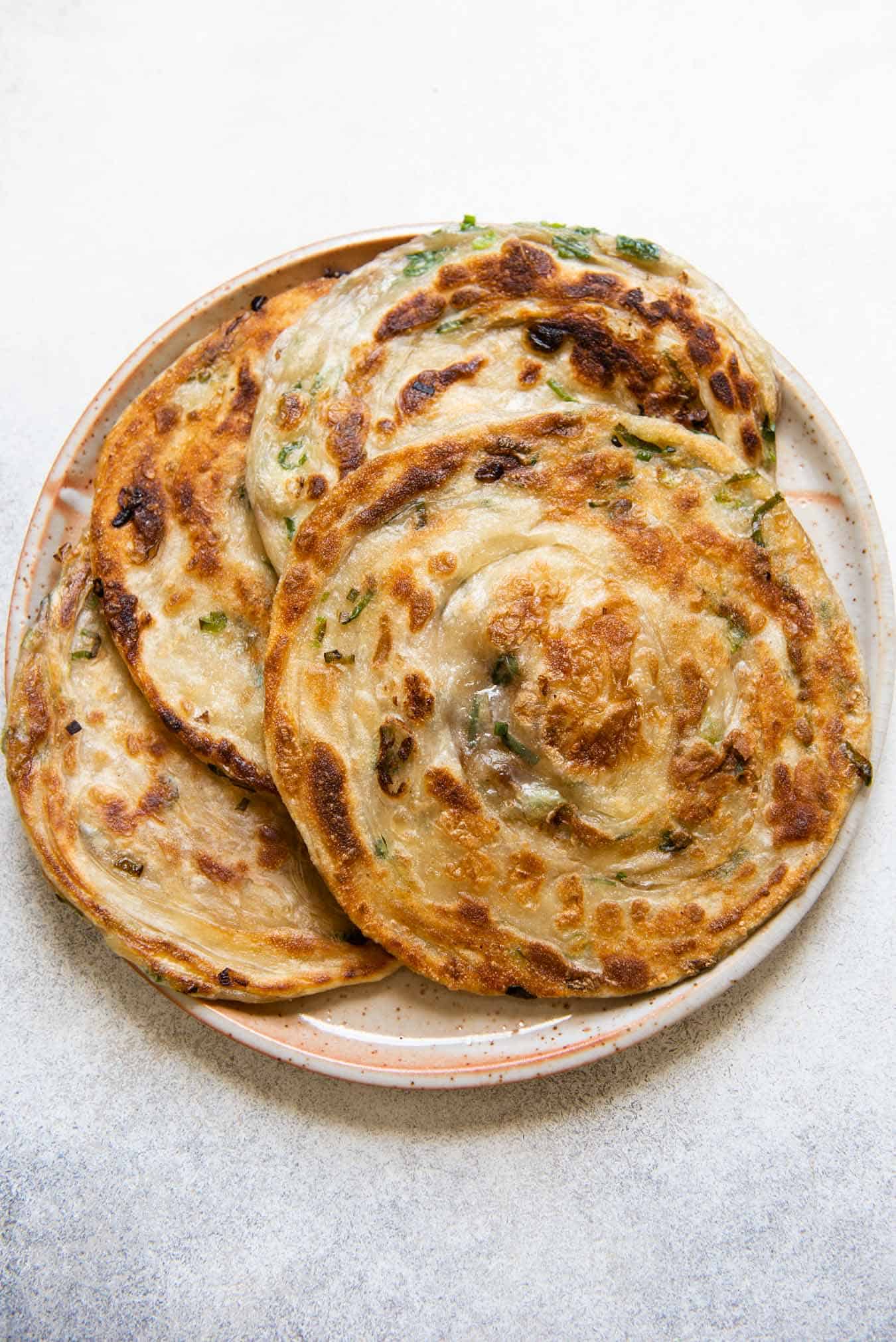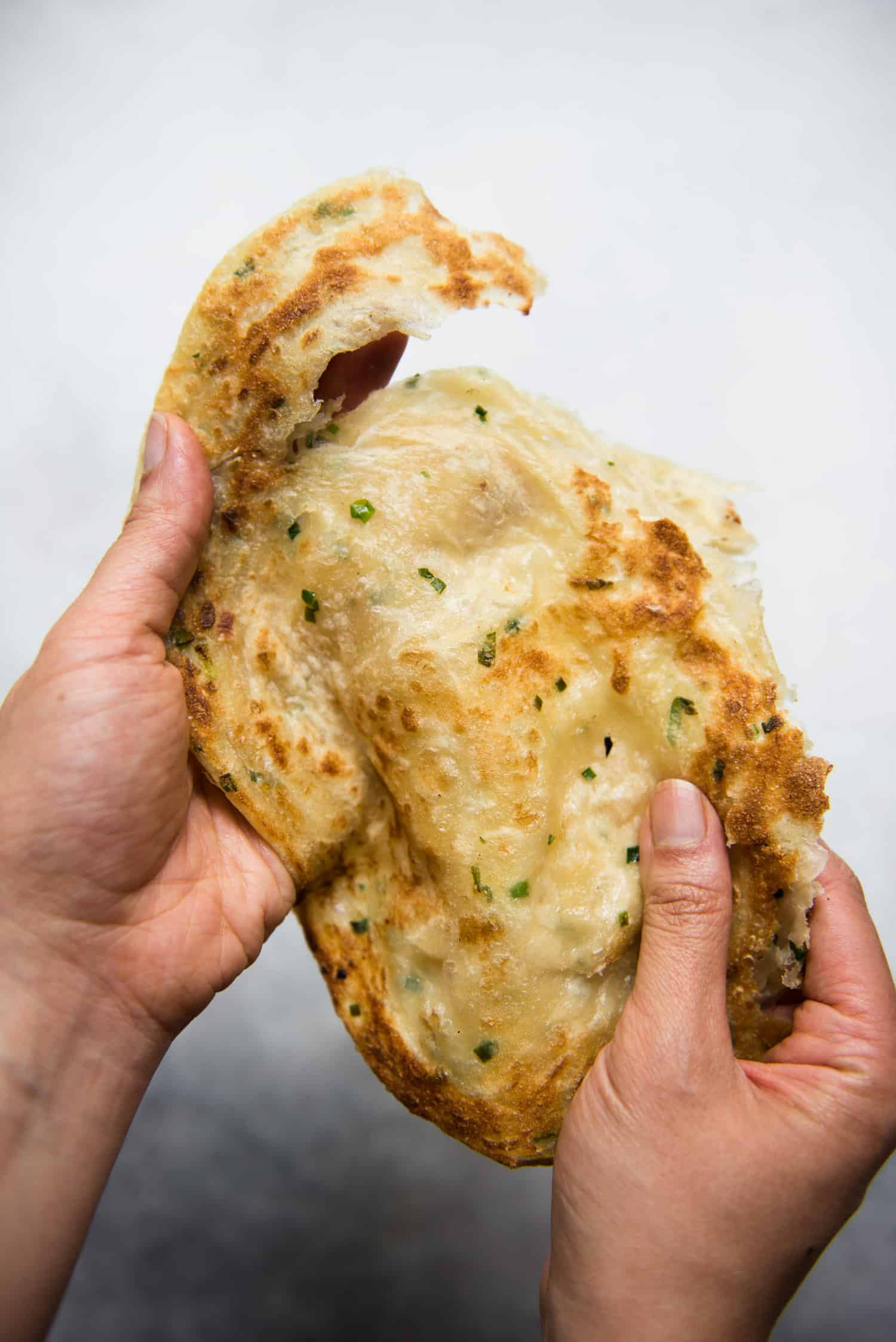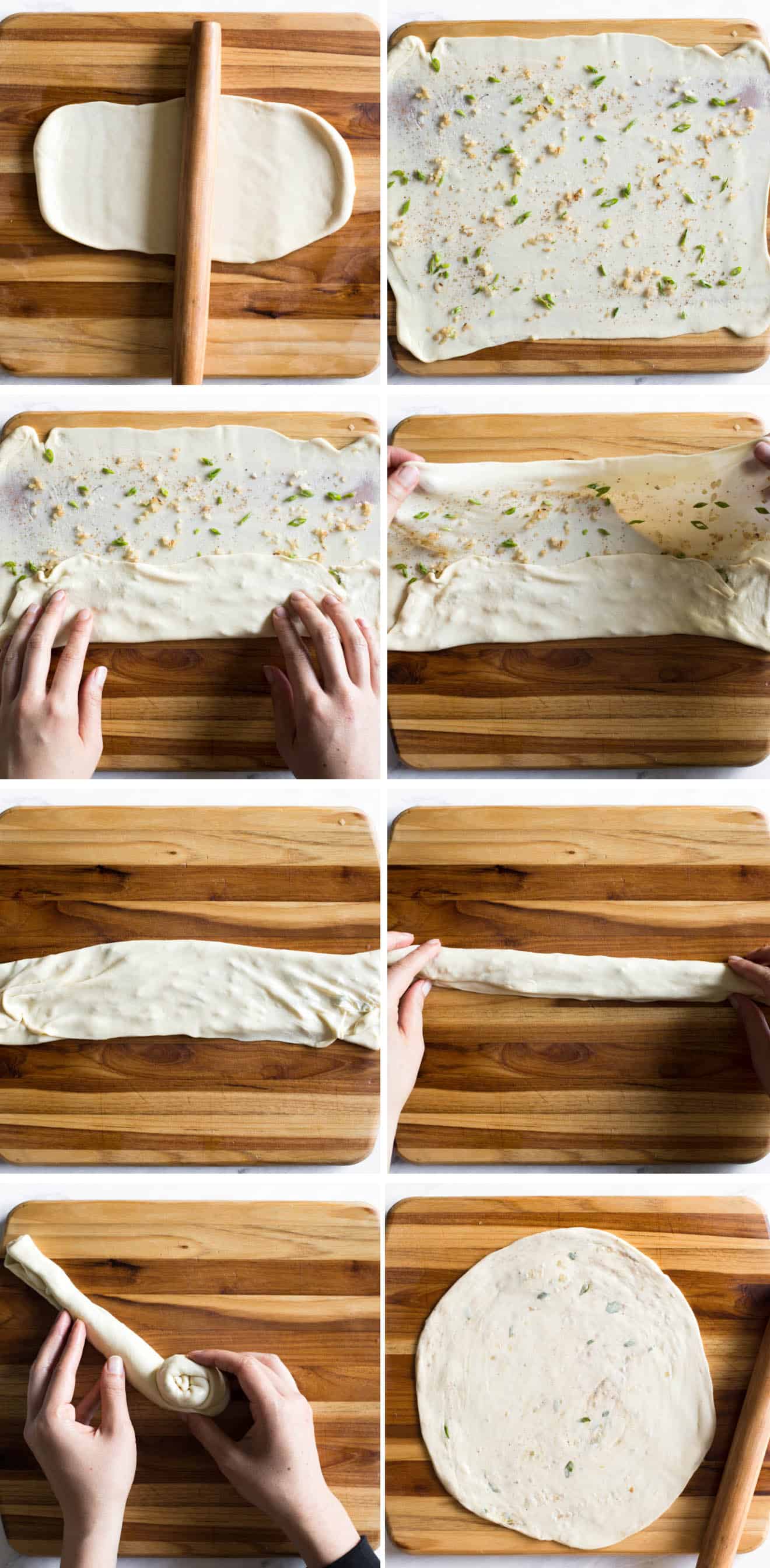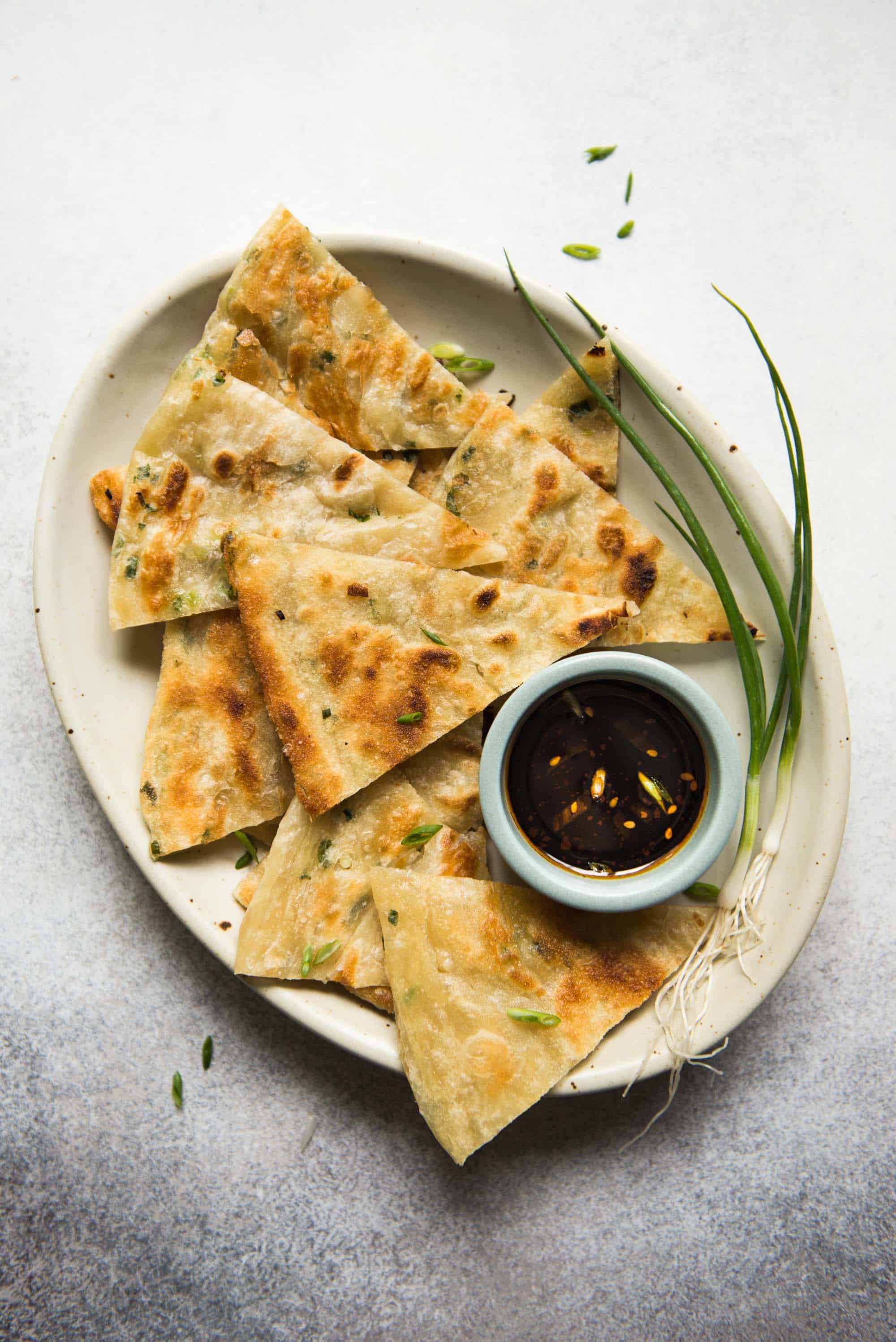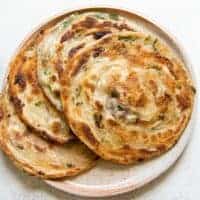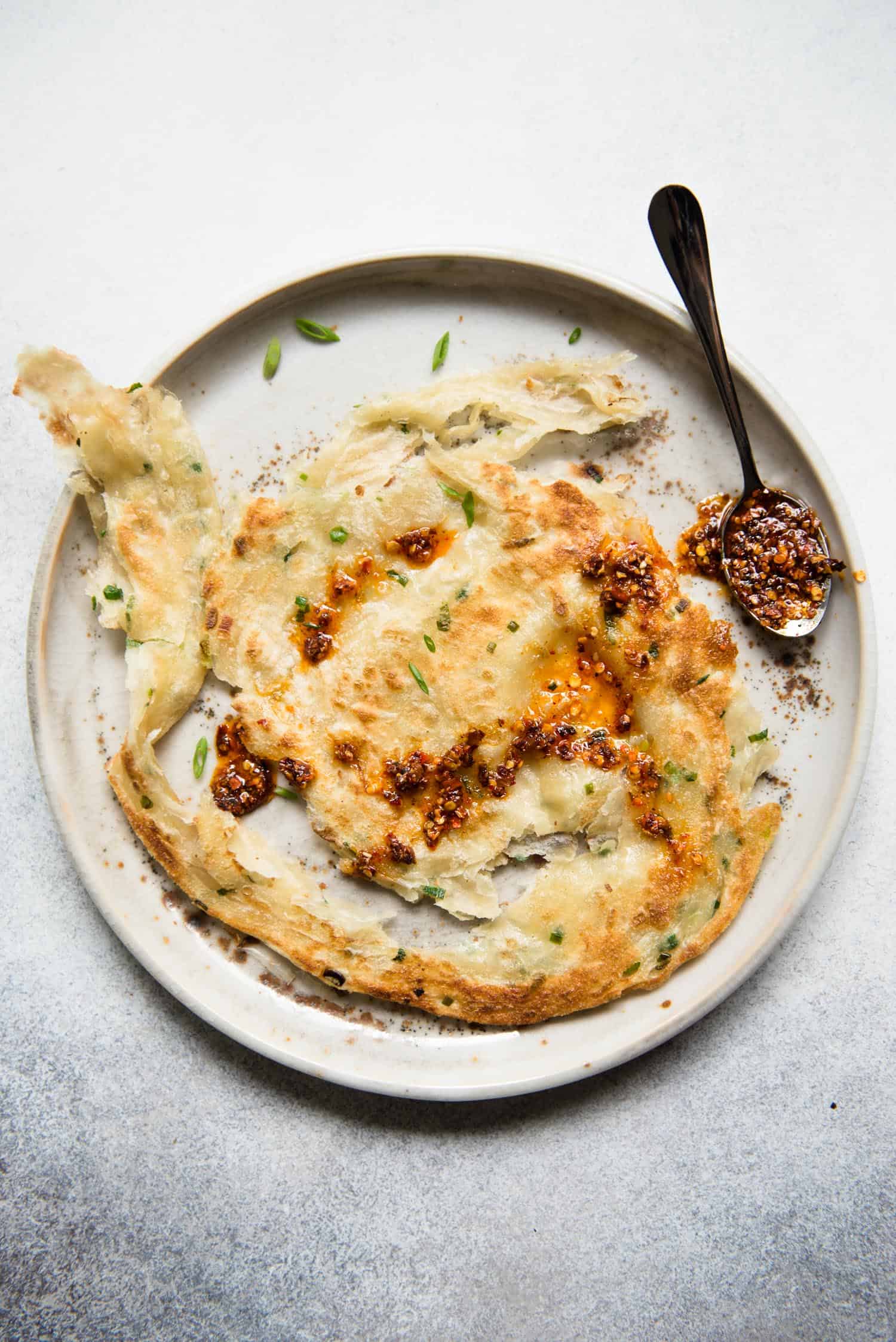It took me a while to figure out the best method for making scallion pancakes. In the past, I rolled out small balls of dough into a relatively thin circle, rolled that circle up into a tight log, and curled that circle into a snail-like shape. Then, I would roll out that curled dough into a thin circle again, and pan fried the pancakes (see my post here for the full recipe). Although the pancakes tasted fine, I still believed that I could come up with a better recipe. After watching many, many YouTube videos, I finally developed a better method for the recipe!
KEYS TO MAKING EXTRA FLAKY SCALLION PANCAKES
Roll out the dough as thinly as possible: When you first roll the dough, you want to make sure to roll it out as thinly as possible. You almost want to be able to see through the dough to the surface underneath the dough. This helps create the thin, airy layers inside the pancake when you rip it open.Oil your work surface: Most recipes call for rolling out the dough on a floured surface, and that’s what I had done as well. However, I found that I can roll out the dough more thinly on an oiled surface. I found that the oil helps the dough grip onto the work surface, allowing you to roll out a thinner pancake.Gather the rolled out dough into a rope versus rolling it into a tight log: Many, many recipes that I’ve seen (including the one I previously created) direct readers to roll up the dough into a tight log after the initial rolling. I actually think this creates pancakes with a denser center. In this recipe, I want you to gently fold the dough into thirds, lengthwise, and then fold everything over again once more. You don’t need to be too precise with this. Then you gather all the dough as if it was a long rope that you then curl into a snail-like shape. You don’t need to curl the dough tightly either.The final rollout: Right before cooking the pancakes, you’ll take the curled-up dough and roll it out into a big thin pancake. Again, I find that rolling this out on an oiled surface will yield thinner pancakes.
ADDITIONAL COOKING NOTES
Making the dough ahead: I usually prep the dough a day ahead. I place the kneaded ball of dough into a lightly greased bowl, and cover the bowl with 2 layers of plastic wrap: one layer that sits snugly right above the dough and another layer that covers the bowl on the top. This helps keep condensation from developing around the dough. You can keep the dough in your fridge for 1 to 2 days before you make the pancakes.Rolling the dough on a marble pastry board vs wooden board: I found that I can roll out the thinnest layers on a marble pastry board. However, the surface is very slippery, particularly at the beginning. It is much easier to roll out the dough on a wooden board because the dough grips onto the board more. I haven’t tried rolling it out on my countertop, but I imagine that it would be similar to my marble slab.Do not transfer the cooked pancakes to paper towel-lined plates: I know it’s customary to transfer fried foods to plates lined with paper towels, but don’t do it here. If possible, transfer them to a wire cooling rack or a plate. Placing hot pancakes onto a plate will cause the bottoms to steam up and soften.
MORE SIMPLE CHINESE RECIPES
Chinese Chive Boxes (韭菜盒子)Basic Rice Noodle Rolls (Cheung Fun, 腸粉)
VIDEO: WATCH HOW TO MAKE SCALLION PANCAKES
